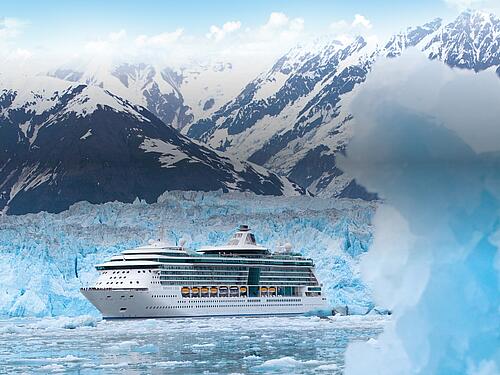If you’re dreaming of cruising through the scenic wonders of Alaska, you may be wondering when is the ideal time to embark on this unforgettable journey. From witnessing breaching whales to exploring glaciers, Alaska offers an abundance of natural beauty all year round. However, each season holds its own unique charm. Whether you prefer to soak up the vibrant colors of summer or witness the stillness of winter, this article will guide you in choosing the best time to go on an Alaska cruise, ensuring a truly memorable adventure awaits you.
Factors to Consider
When planning your Alaska cruise, there are several important factors to take into consideration. These factors will help you decide the best time to visit this incredible destination. By considering the weather and climate, wildlife viewing opportunities, budget and pricing, as well as crowds and availability, you will be able to make an informed decision that suits your preferences and needs.
Weather and Climate
The weather and climate in Alaska can vary greatly depending on the time of year you choose to visit. In general, the summer months (June to August) offer the warmest temperatures, with average highs ranging from the 60s to 70s Fahrenheit. This is the best time to enjoy outdoor activities and explore the stunning landscapes of Alaska. However, it’s important to note that the weather can be unpredictable, so make sure to pack layers and be prepared for changeable conditions.
Spring (April and May) is known for its moderate weather conditions. It offers mild temperatures, making it a comfortable time to visit Alaska. The scenery during spring is breathtaking, with snow-capped mountains, lush green forests, and vibrant wildflowers. Additionally, spring is a prime time for whale watching and a chance to witness the mesmerizing Northern Lights.
Fall (September and October) brings colorful fall foliage, adding a vibrant touch to Alaska’s already stunning landscapes. The weather during this time is cooler, but still pleasant, making it an ideal time for outdoor activities and exploring the national parks. Fall also offers fewer crowds compared to summer, giving you a more peaceful and serene experience.
Winter (November to March) offers a completely different experience in Alaska. It is the coldest time of year, with temperatures often dropping below freezing. However, winter in Alaska also means the lowest prices and the opportunity to witness the incredible Northern Lights dancing across the night sky. Outdoor activities like dog sledding and snowshoeing are popular winter pastimes, and you can also partake in ice-sculpting festivals and immerse yourself in the magical winter wonderland.

Wildlife Viewing Opportunities
Alaska is renowned for its abundant wildlife, and the best time to spot these incredible creatures varies depending on the species you’re interested in observing. Summer (May to August) is generally the prime time for wildlife viewing. During this period, many animals, including bears, wolves, moose, and eagles, are active and easily spotted. The extended daylight hours of summer provide ample opportunities to observe these creatures in their natural habitats.
If whale watching is your priority, then spring (April and May) is the best time to plan your Alaska cruise. During this period, humpback whales migrate through the Alaskan waters, providing awe-inspiring opportunities to witness their impressive breaching and feeding behaviors. The calmer seas of spring also make for a more enjoyable and comfortable whale-watching experience.

Budget and Pricing
The cost of an Alaska cruise can vary depending on the time of year you choose to visit. Summer (June to August) is typically the peak season, with higher prices due to increased demand. If you’re looking to save money, consider visiting during the shoulder season. Spring (April and May) and fall (September and October) offer more affordable prices and often have special promotions and discounts available. Winter (November to March) is the offseason, offering the lowest prices but limited cruise availability.

Crowds and Availability
Another factor to consider is the level of crowds and availability of Alaska cruises. If you prefer a more peaceful and less crowded experience, then visiting during the shoulder season of spring (April and May) or fall (September and October) is your best bet. These periods have fewer visitors compared to the peak summer season, allowing you to fully immerse yourself in Alaska’s natural beauty without the hustle and bustle.
On the other hand, if you’re looking to experience the lively atmosphere and take part in festivals and events, summer (June to August) is the time to go. During this period, there are numerous festivals and cultural events happening throughout Alaska, offering a vibrant and exciting atmosphere. However, it’s important to note that popular summer dates fill up quickly, so it’s advisable to book in advance to secure your spot.
In conclusion, choosing the best time to go on an Alaska cruise depends on your preferences and what you hope to experience during your trip. Each season offers its own unique attractions, whether it’s the warm temperatures and abundant wildlife of summer, the moderate weather and stunning scenery of spring, the colorful fall foliage and affordable prices of fall, or the lowest prices and magical winter activities of winter. Consider the factors outlined above, and you’ll be well on your way to planning your perfect Alaska cruise adventure.


